1. Bellocchia M, Masoero M, Ciuffreda A, Croce S, Vaudano A, Torchio R, et al. Predictors of cardiovascular disease in asthma and chronic obstructive
pulmonary disease. Multidiscip Respir Med. 2013; 8:58. PMID:
24004921.

2. Price D, West D, Brusselle G, Gruffydd-Jones K, Jones R, Miravitlles M, et al. Management of COPD in the UK primary-care setting: an analysis of real-life
prescribing patterns. Int J Chron Obstruct Pulmon Dis. 2014; 9:889–904. PMID:
25210450.
3. Vestbo J, Vogelmeier C, Small M, Higgins V. Understanding the GOLD 2011 Strategy as applied to a real-world COPD
population. Respir Med. 2014; 108:729–736. PMID:
24675239.
4. Worth H, Buhl R, Criee CP, Kardos P, Mailander C, Vogelmeier C. The ‘real-life’ COPD patient in Germany: The DACCORD
study. Respir Med. 2016; 111:64–71. PMID:
26775251.
5. Eriksson KO, Naidu AS, Kilar F, Wadstrom T, Hjerten S. Surface hydrophobicity and electrophoretic mobilities of staphylococcal
exotoxins with special reference to toxic shock syndrome toxin-1. APMIS. 1989; 97:1081–1087. PMID:
2611023.
6. Gonzalez AV, Coulombe J, Ernst P, Suissa S. Long-term use of inhaled corticosteroids in COPD and the risk of
fracture. Chest. 2018; 153:321–328. PMID:
28716642.
7. Price D, Yawn B, Brusselle G, Rossi A. Risk-to-benefit ratio of inhaled corticosteroids in patients with
COPD. Prim Care Respir J. 2013; 22:92–100. PMID:
23135217.
8. Di Stefano A, Capelli A, Lusuardi M, Balbo P, Vecchio C, Maestrelli P, et al. Severity of airflow limitation is associated with severity of airway
inflammation in smokers. Am J Respir Crit Care Med. 1998; 158:1277–1285. PMID:
9769292.
9. Saha S, Brightling CE. Eosinophilic airway inflammation in COPD. Int J Chron Obstruct Pulmon Dis. 2006; 1:39–47. PMID:
18046901.

10. Christenson SA, Steiling K, van den Berge M, Hijazi K, Hiemstra PS, Postma DS, et al. Asthma-COPD overlap. Clinical relevance of genomic signatures of type 2
inflammation in chronic obstructive pulmonary disease. Am J Respir Crit Care Med. 2015; 191:758–766. PMID:
25611785.
11. Barnes PJ. Therapeutic approaches to asthma-chronic obstructive pulmonary disease
overlap syndromes. J Allergy Clin Immunol. 2015; 136:531–545. PMID:
26343937.
12. Brightling CE, Monteiro W, Ward R, Parker D, Morgan MD, Wardlaw AJ, et al. Sputum eosinophilia and short-term response to prednisolone in chronic
obstructive pulmonary disease: a randomised controlled trial. Lancet. 2000; 356:1480–1485. PMID:
11081531.
13. Brightling CE, McKenna S, Hargadon B, Birring S, Green R, Siva R, et al. Sputum eosinophilia and the short term response to inhaled mometasone in
chronic obstructive pulmonary disease. Thorax. 2005; 60:193–198. PMID:
15741434.
14. Bafadhel M, McKenna S, Terry S, Mistry V, Pancholi M, Venge P, et al. Blood eosinophils to direct corticosteroid treatment of exacerbations of
chronic obstructive pulmonary disease: a randomized placebo-controlled
trial. Am J Respir Crit Care Med. 2012; 186:48–55. PMID:
22447964.
15. Barnes NC, Sharma R, Lettis S, Calverley PM. Blood eosinophils as a marker of response to inhaled corticosteroids in
COPD. Eur Respir J. 2016; 47:1374–1382. PMID:
26917606.
16. Negewo NA, McDonald VM, Baines KJ, Wark PA, Simpson JL, Jones PW, et al. Peripheral blood eosinophils: a surrogate marker for airway eosinophilia in
stable COPD. Int J Chron Obstruct Pulmon Dis. 2016; 11:1495–1504. PMID:
27445469.
17. Bafadhel M, Peterson S, De Blas MA, Calverley PM, Rennard SI, Richter K, et al. Predictors of exacerbation risk and response to budesonide in patients with
chronic obstructive pulmonary disease: a post-hoc analysis of three randomised
trials. Lancet Respir Med. 2018; 6:117–126. PMID:
29331313.
18. Global Initiative for Chronic Obstructive Lung Disease. Global strategy for the diagnosis, management, and prevention of chronic
obstructive pulmonary disease: 2019 update [Internet]. Fontana, WI: Global Initiative for Chronic Obstructive Lung Disease;2019. cited 2019 Feb 15. Available from:
http://www.goldcopd.org.
19. Shin SH, Park HY, Kang D, Cho J, Kwon SO, Park JH, et al. Serial blood eosinophils and clinical outcome in patients with chronic
obstructive pulmonary disease. Respir Res. 2018; 19:134. PMID:
30001715.

20. Southworth T, Beech G, Foden P, Kolsum U, Singh D. The reproducibility of COPD blood eosinophil counts. Eur Respir J. 2018; 52:1800427. PMID:
29724922.

21. Jatakanon A, Lim S, Kharitonov SA, Chung KF, Barnes PJ. Correlation between exhaled nitric oxide, sputum eosinophils, and
methacholine responsiveness in patients with mild asthma. Thorax. 1998; 53:91–95. PMID:
9624291.
22. Berlyne GS, Parameswaran K, Kamada D, Efthimiadis A, Hargreave FE. A comparison of exhaled nitric oxide and induced sputum as markers of
airway inflammation. J Allergy Clin Immunol. 2000; 106:638–644. PMID:
11031333.
23. Price DB, Buhl R, Chan A, Freeman D, Gardener E, Godley C, et al. Fractional exhaled nitric oxide as a predictor of response to inhaled
corticosteroids in patients with nonspecific respiratory symptoms and insignificant
bronchodilator reversibility: a randomised controlled trial. Lancet Respir Med. 2018; 6:29–39. PMID:
29108938.
24. Lee JY, Chon GR, Rhee CK, Kim DK, Yoon HK, Lee JH, et al. Characteristics of patients with chronic obstructive pulmonary disease at
the first visit to a pulmonary medical center in Korea: The KOrea COpd Subgroup Study
Team Cohort. J Korean Med Sci. 2016; 31:553–560. PMID:
27051239.
25. Pellegrino R, Viegi G, Brusasco V, Crapo RO, Burgos F, Casaburi R, et al. Interpretative strategies for lung function tests. Eur Respir J. 2005; 26:948–968. PMID:
16264058.
26. Choi JK, Paek D, Lee JO. Normal predictive values of spirometry in Korean population. Tuberc Respir Dis. 2005; 58:230–242.

27. Dweik RA, Boggs PB, Erzurum SC, Irvin CG, Leigh MW, Lundberg JO, et al. An official ATS clinical practice guideline: interpretation of exhaled
nitric oxide levels (FENO) for clinical applications. Am J Respir Crit Care Med. 2011; 184:602–615. PMID:
21885636.
28. Kim JH, Yim JJ. Achievements in and challenges of tuberculosis control in South
Korea. Emerg Infect Dis. 2015; 21:1913–1920. PMID:
26485188.
29. Pavord ID, Lettis S, Locantore N, Pascoe S, Jones PW, Wedzicha JA, et al. Blood eosinophils and inhaled corticosteroid/long-acting beta-2 agonist
efficacy in COPD. Thorax. 2016; 71:118–125. PMID:
26585525.
30. Su VY, Yang KY, Yang YH, Tsai YH, Perng DW, Su WJ, et al. Use of ICS/LABA combinations or LAMA is associated with a lower risk of
acute exacerbation in patients with coexistent COPD and asthma. J Allergy Clin Immunol Pract. 2018; 6:1927–1935. PMID:
29432960.
31. Oshagbemi OA, Burden AM, Braeken DC, Henskens Y, Wouters EF, Driessen JH, et al. Stability of blood eosinophils in patients with chronic obstructive
pulmonary disease and in control subjects, and the impact of sex, age, smoking, and
baseline counts. Am J Respir Crit Care Med. 2017; 195:1402–1404. PMID:
28165763.
32. Vedel-Krogh S, Nielsen SF, Lange P, Vestbo J, Nordestgaard BG. Blood eosinophils and exacerbations in chronic obstructive pulmonary
disease. The Copenhagen General Population Study. Am J Respir Crit Care Med. 2016; 193:965–974. PMID:
26641631.
33. Dweik RA, Comhair SA, Gaston B, Thunnissen FB, Farver C, Thomassen MJ, et al. NO chemical events in the human airway during the immediate and late
antigen-induced asthmatic response. Proc Natl Acad Sci U S A. 2001; 98:2622–2627. PMID:
11226289.
34. Antus B, Barta I, Horvath I, Csiszer E. Relationship between exhaled nitric oxide and treatment response in COPD
patients with exacerbations. Respirology. 2010; 15:472–477. PMID:
20210889.
35. Soter S, Barta I, Antus B. Predicting sputum eosinophilia in exacerbations of COPD using exhaled
nitric oxide. Inflammation. 2013; 36:1178–1185. PMID:
23681903.
36. Colak Y, Afzal S, Nordestgaard BG, Marott JL, Lange P. Combined value of exhaled nitric oxide and blood eosinophils in chronic
airway disease: the Copenhagen General Population Study. Eur Respir J. 2018; 52:1800616. PMID:
29903861.
37. Chen FJ, Huang XY, Liu YL, Lin GP, Xie CM. Importance of fractional exhaled nitric oxide in the differentiation of
asthma-COPD overlap syndrome, asthma, and COPD. Int J Chron Obstruct Pulmon Dis. 2016; 11:2385–2390. PMID:
27713629.
38. Antus B, Horvath I, Barta I. Assessment of exhaled nitric oxide by a new hand-held
device. Respir Med. 2010; 104:1377–1380. PMID:
20594818.
39. Kharitonov SA, Barnes PJ. Exhaled markers of pulmonary disease. Am J Respir Crit Care Med. 2001; 163:1693–1722. PMID:
11401895.

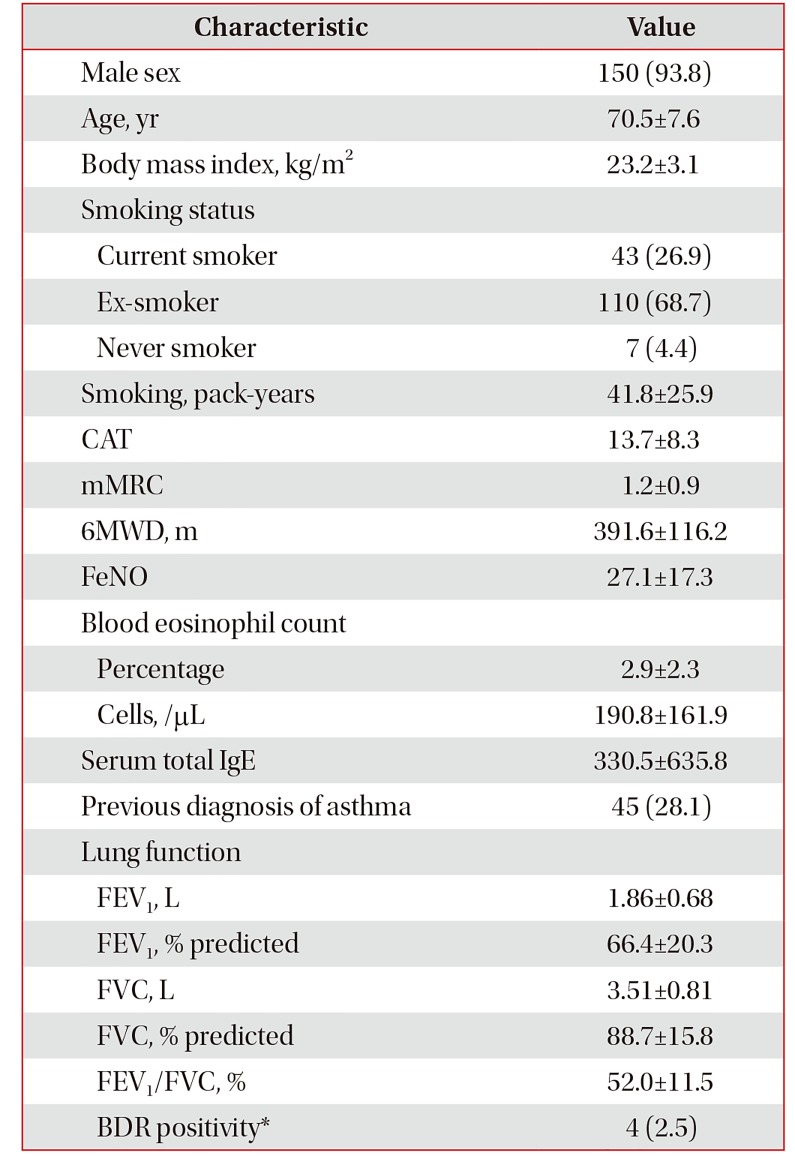
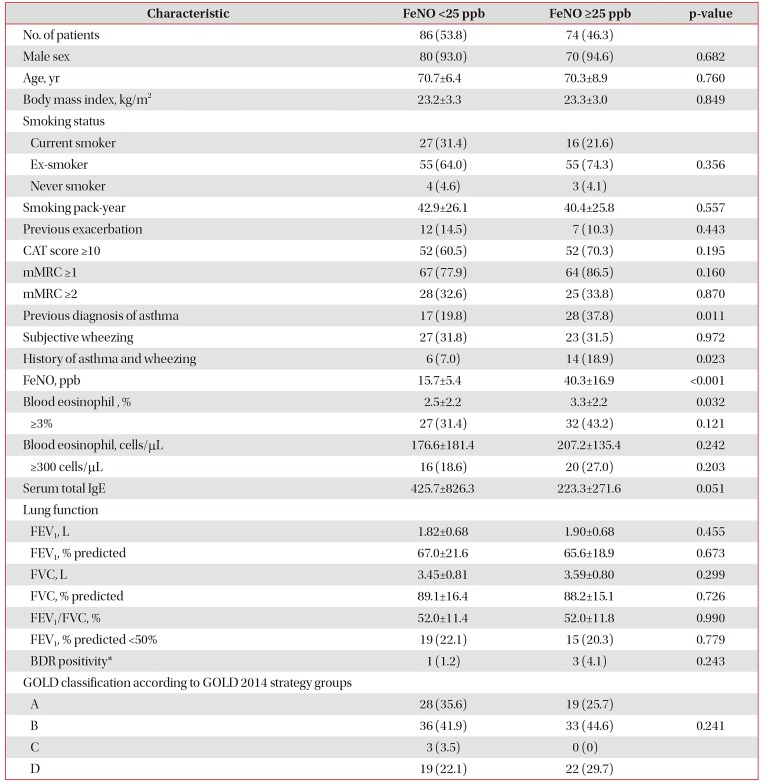
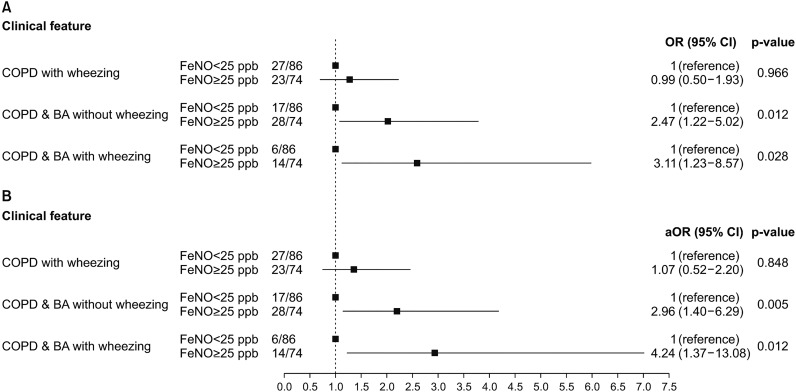
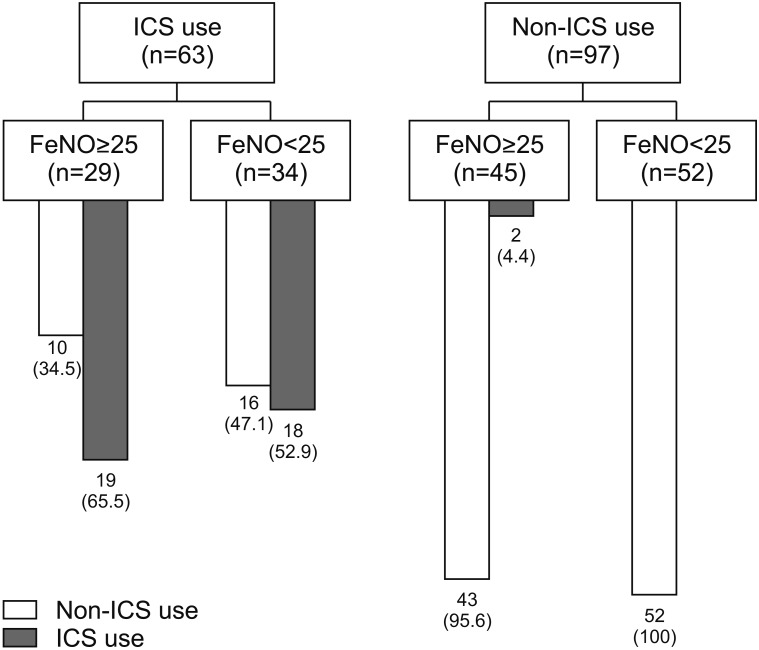




 PDF
PDF ePub
ePub Citation
Citation Print
Print



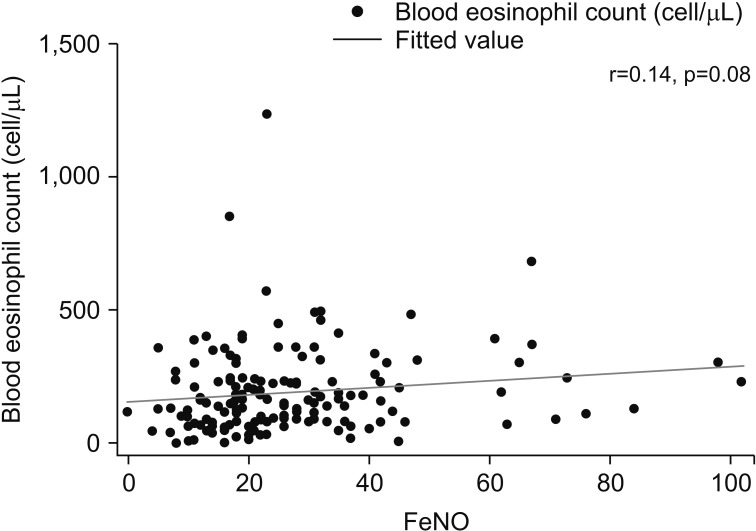
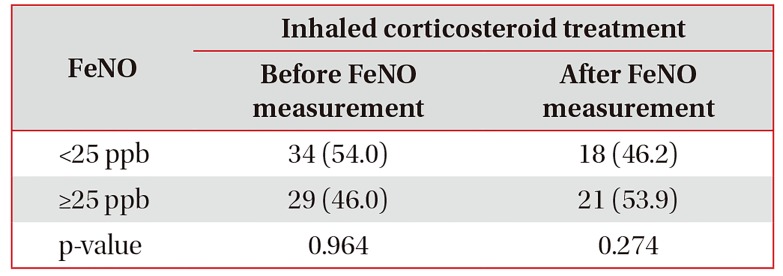
 XML Download
XML Download